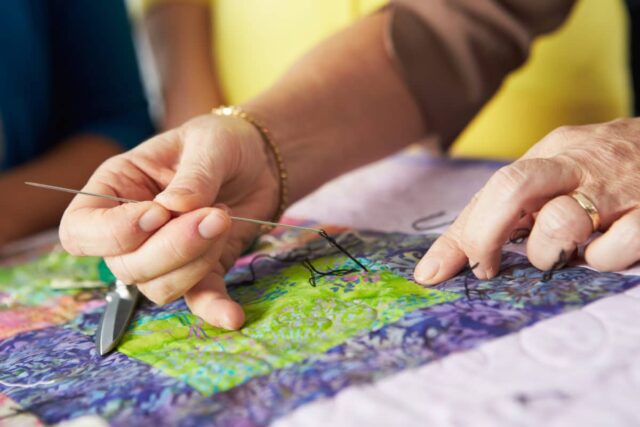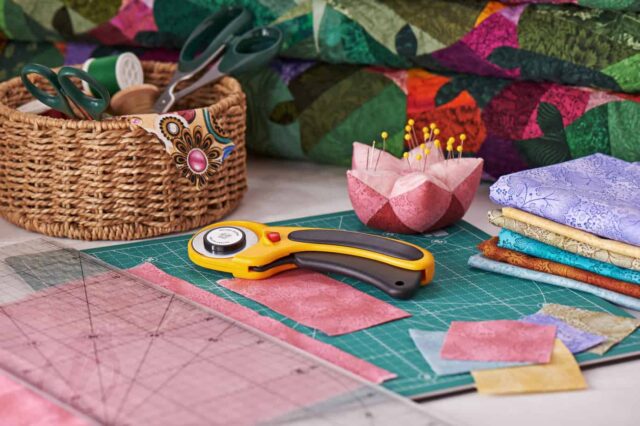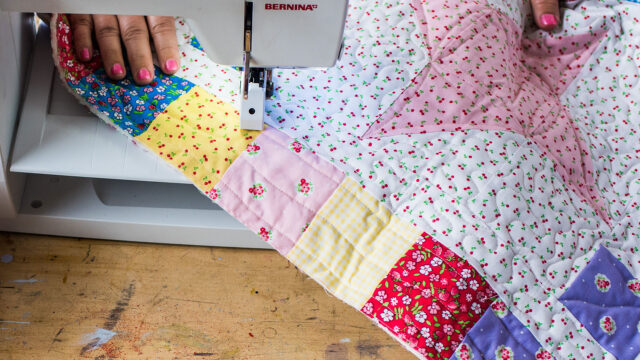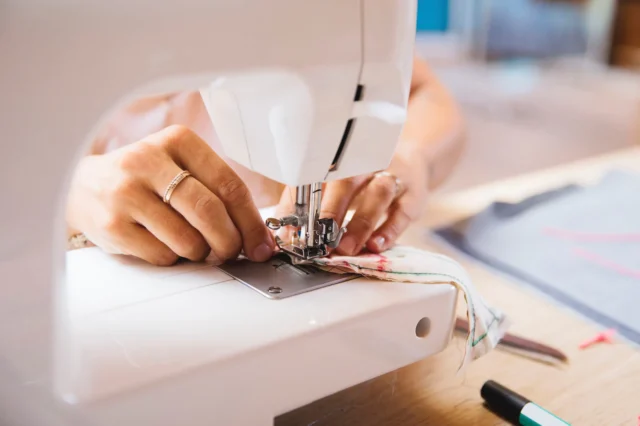
To develop a thicker, more cushioned material, two or additional cloth pieces are sewn together during the quilting procedure. The majority of the time, it is done to make a quilt or another type of quilted fabric, which can be utilized for a variety of purposes. Quilting involves three layers: the quilt top, a middle layer of padding or insulation, and the backing material. The quilt top is the top layer of cloth.
A quilt is made through quilting, which involves sewing together two or more layers of cloth with a needle and thread. The needle and thread are threaded through each layer by the quilter’s hand or machine before being brought back up.
The procedure is reiterated across the whole part where quilting is needed. With these stitching’s, straight, running, or rocking stitches are normally utilized either for functional or decorative purposes.
What Are The Advantages Of Quilting?
Bedspreads, wall hangings made from art quilts, apparel, and other textile products are all made through the quilting procedure. A project might become thicker by this method, and one section can be lifted to make it unique. Here are the primary advantages you can enjoy by learning quilting.
1. Helps In Relieving Stress

One illustration of the health advantages of the quilting process is how relaxing the act of quilting itself is. Our brain becomes more relaxed during the sewing, which lowers the combat reaction brought on by stress. Quilters get a sense of success after finishing a project, which directly contributes to stress reduction because it increases their confidence and creative skills.
2. Boosting Cognitive Skills
Your mind stays sharp when you quilt. Your cognitive abilities will benefit greatly from the math and calculating required. People who work with creative processes frequently are more likely to be cognitively superior than people who are not.
Examples include having the ability to solve problems, perceiving the greater picture in fragmented visuals, and reacting quickly to outside factors.
One might anticipate performing better with these abilities in both real lives and the actual artwork. In addition, research demonstrates that sewing cloth patterns are very beneficial, even more than exercising. It is, therefore, a fantastic way to maintain brain health.
3. Keeps People Happy

People are happier when they are engaged in meaningful work. It is applicable to quilters who have created something lovely, tangible, and shareable with their friends and relatives as a result of their efforts.
According to a study, the happy neurotransmitters dopamine and serotonin flood quilt makers’ brains when they see their finished creation. The tension and anxiety-reducing hormones in the brain are also reduced by this sensation of success. In a nutshell, quilting helps people feel productive, pleased, and joyful.
4. Enhance Self-Confidence
With each quilt you finish, your confidence grows, and this process is a good way to gain more self-confidence. You grow a sense of pride in seeing the finished product made with your own hands as you work your way through a new project from concept to completion.
Additionally, you develop new skills and build self-assurance each time you make a quilt that uses a technique you did not attempt before. As a result, finishing a quilting project can greatly increase one’s confidence. Are you interested in quilting and want to learn it? In that case, make sure to check out carolinaoneto.com to attend various online quilting courses.
5. Makes It Possible To Recycle Waste

The ability to turn trash into useful items is yet another key advantage of learning to quilt. If patchwork is not treated properly, it will produce a lot of waste. There are no useless scraps of fabric that are just thrown away during sewing. By using your imagination, you can transform them into something more practical, like adorning a plain shirt or updating a worn-out tablecloth.
6. Positive Hobbies For Kids
Quilting is a hobby that is suited for kids and teenagers as well as adults. Their imaginations are stimulated, and their personalities are brightened as a result of recreating designs with a variety of colors, compositions, and patterns.
Since quilting involves so many minute details, it can help kids develop self-discipline and train them to focus and concentrate for extended periods of time. Therefore, the learning skills of kids will eventually improve.
7. Make DIY Gifts

By learning quilting, you can undoubtedly make presents or gifts in a more memorable way. Quilted gifts can be created by the recipient themselves, adding a special touch.
Simply change the style or design to reflect the recipient’s preferred color scheme. A few original and imaginative gift suggestions with quilted accents are wedding gifts, simple canvas totes, table cloths, and so on.
8. Socialization
Socialization and a sense of success were frequently highlighted when it comes to the benefits of quilting. Even if they merely converse about quilts, it seems that quilters like spending time with one another. A fun way to get inspiration for upcoming projects is to go shopping with your quilting pals.
Quilters are quick to share their most recent projects and ideas and draw inspiration from one another. As opposed to numerous crafts, tricks and suggestions are shared rather than being kept to oneself. The majority of quilters find enjoyment in instructing others.
9. Decent Business Opportunities

There are several aspects of quilting that can help you run a prosperous business. The quilting field is regarded as a very profitable industry. Blankets, toys, bed decorations, tablecloths, bags, wallets, wall decorations, table garments, and dining decorations are all examples of quilting products.
Would you like to sell these knitting products? Then, it is possible to begin this business affordably. By instructing those in your immediate vicinity on how to operate and grow the firm, you may also build new employment prospects through your enterprise.
Bottom Line
As you can see, there are many advantages of learning quilting. Anyone, regardless of their gender and age, can quilt a variety of patterns by learning them from professionals.












